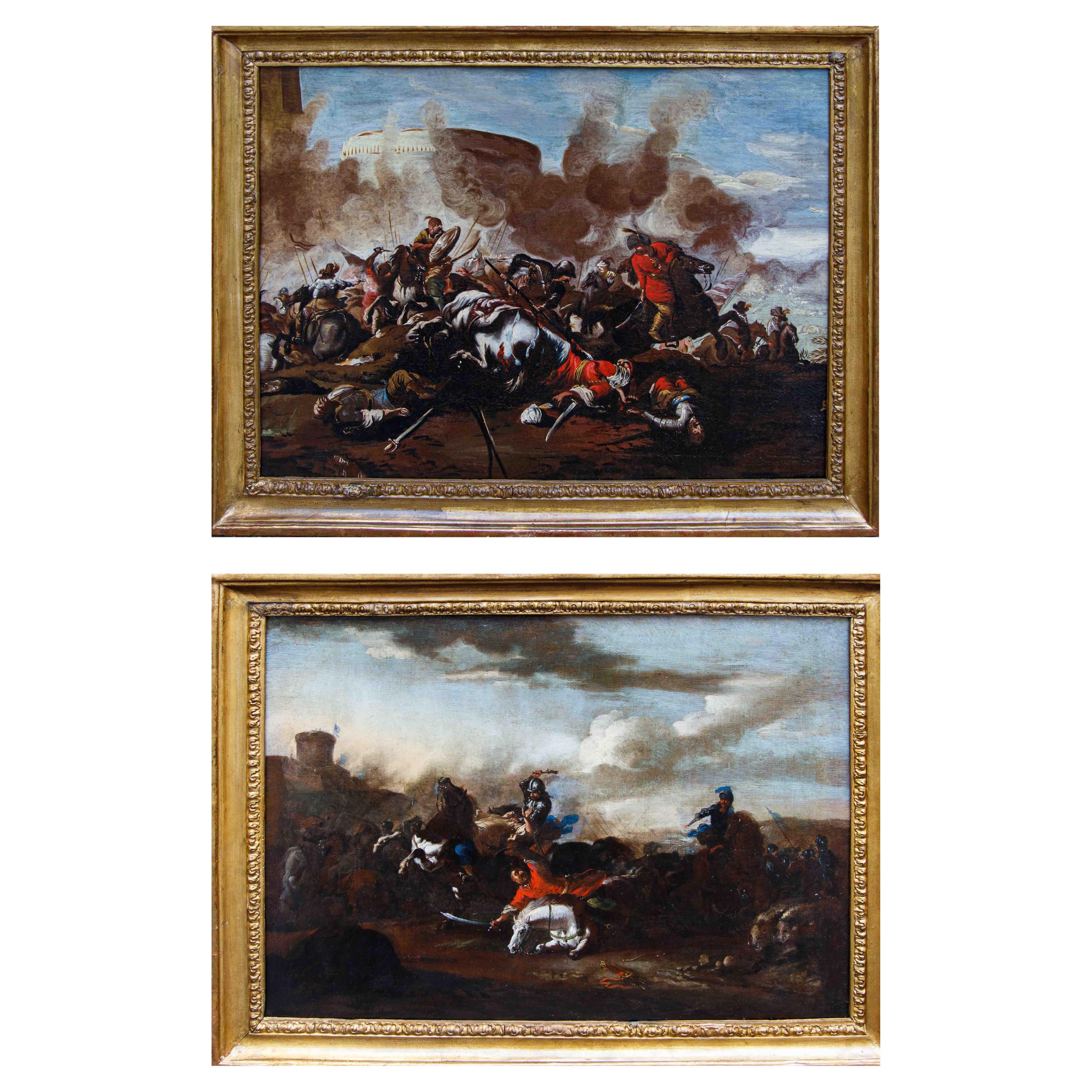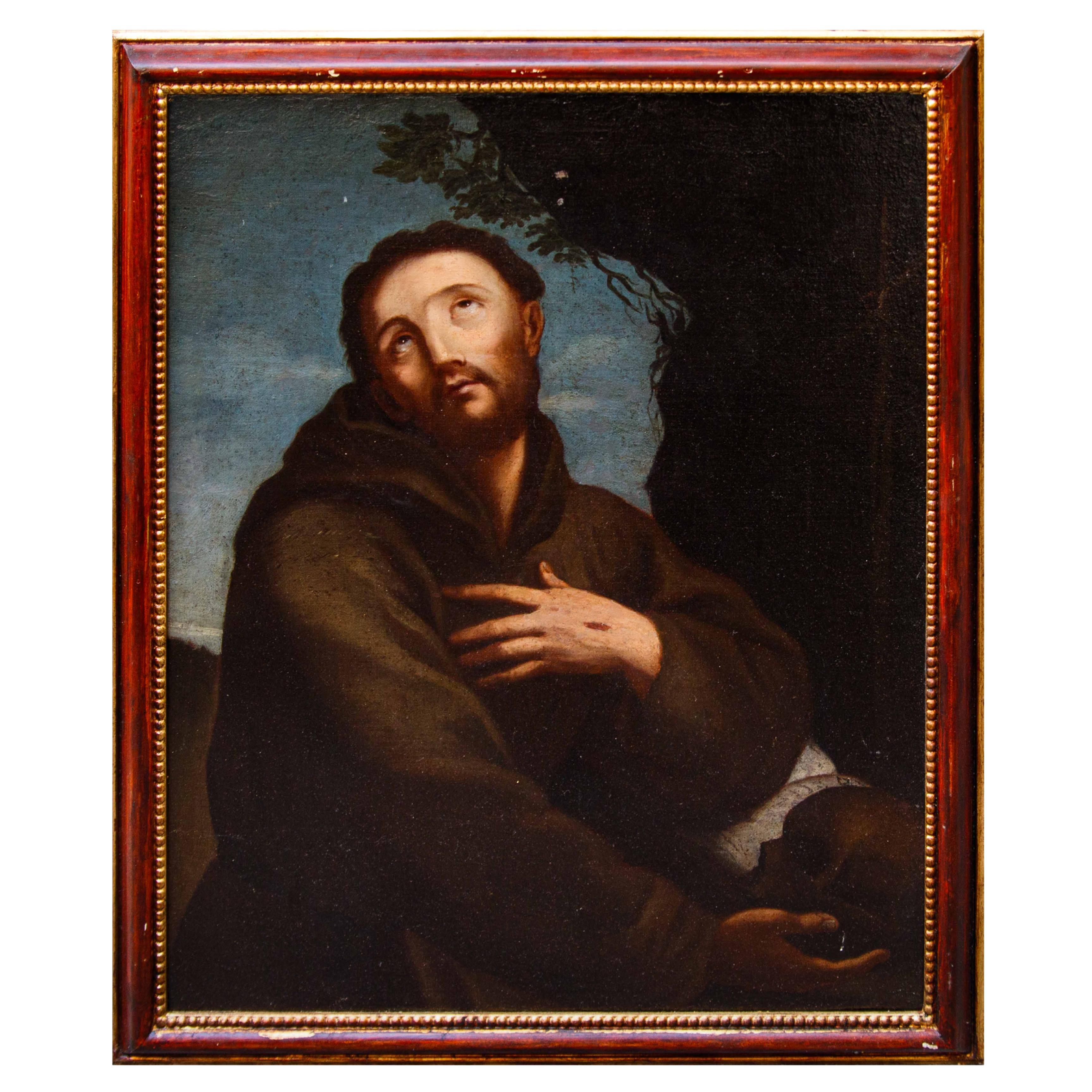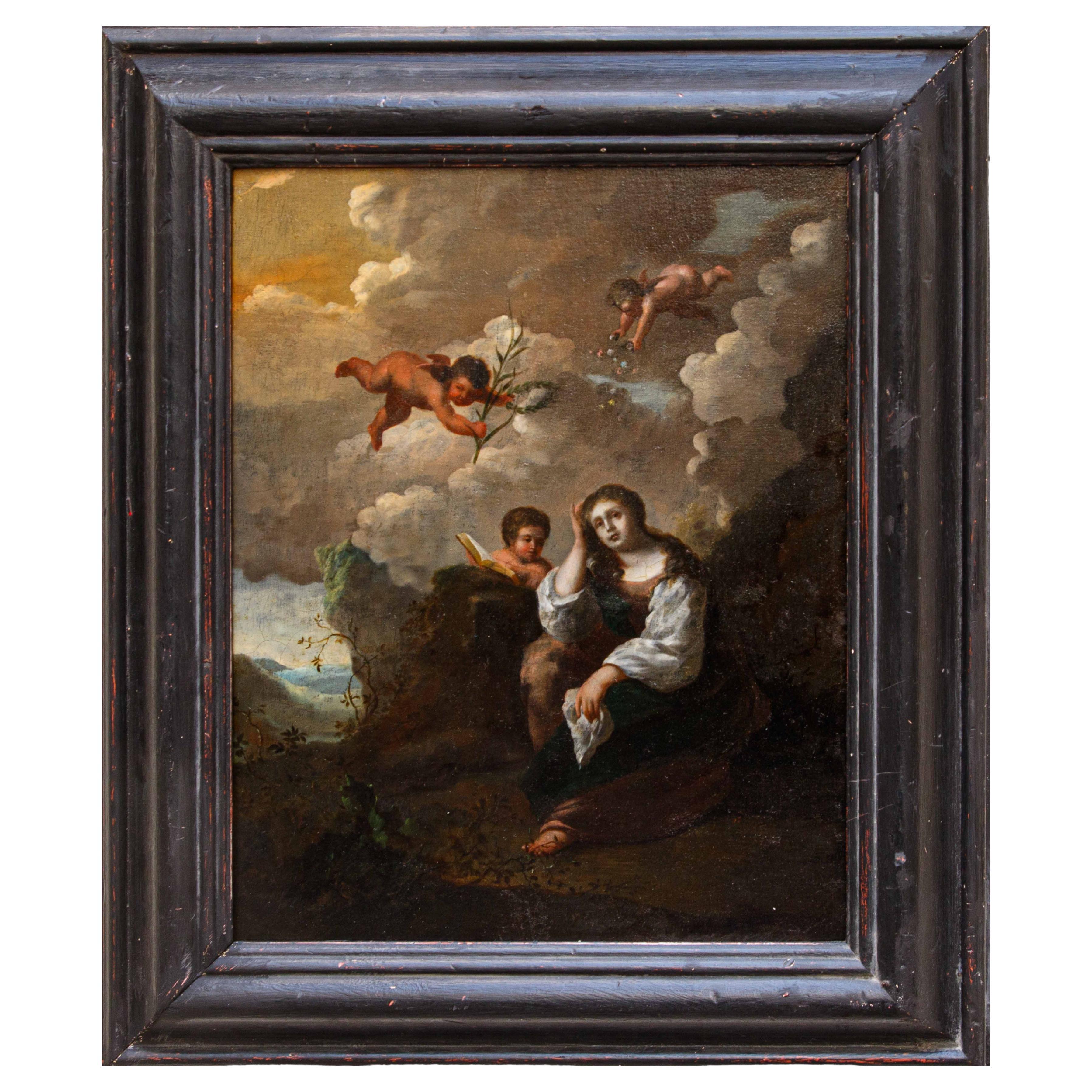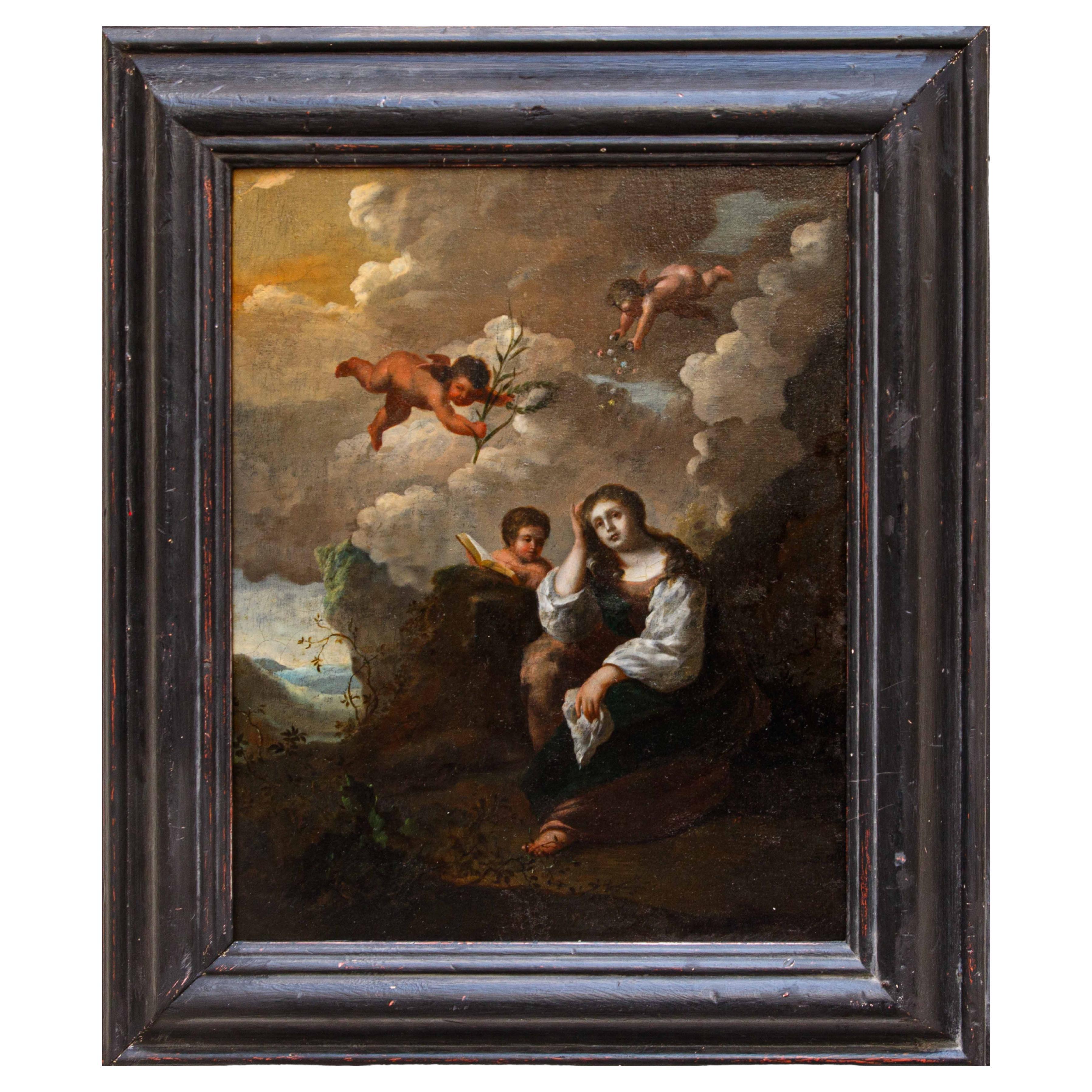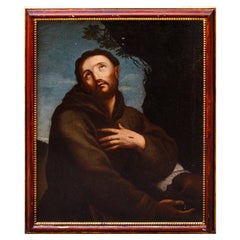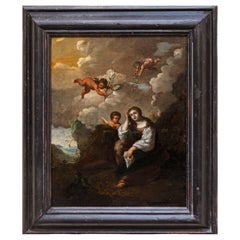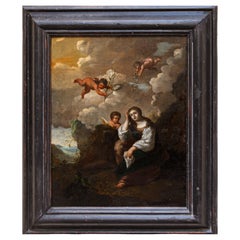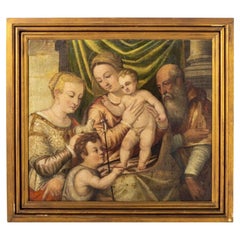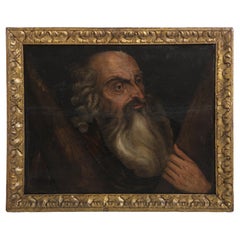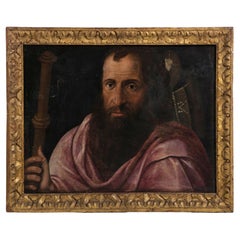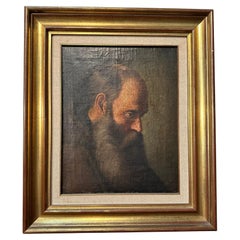Items Similar to Neapolitan school, 17th century, St. Peter Penitent
Want more images or videos?
Request additional images or videos from the seller
1 of 9
Neapolitan school, 17th century, St. Peter Penitent
$4,989.52
£3,709.13
€4,200
CA$6,863.33
A$7,645.60
CHF 4,032.93
MX$92,705.24
NOK 51,304.72
SEK 47,793.59
DKK 31,990.29
About the Item
Neapolitan school, 17th century
Penitent Saint Peter
Oil on canvas, 120 x 98 cm
Framed, 144 x 122 cm
The work under consideration, an oil on canvas depicting St. Peter the Penitent, can be referred by stylistic and iconographic features to the hand of an artist of the 17th-century Neapolitan School, to be inserted in the wake of the Caravaggio tradition and the contribution of all those great masters who became its heirs.
In this painting realism and Caravaggism move together with classicist instances, creating solutions that seem to proceed in parallel. The painter, who demonstrates with this canvas that he has fully learned the lesson of Caravaggio, being strongly influenced by artists who acquired his artistic innovations such as Jusepe de Ribera known as lo Spagnoletto, Francesco and Cesare Fracanzano, or even Giuseppe Marullo, expresses in this subject, recurring in Neapolitan production of the seventeenth century, all his quality and the very strong emotional charge inherent in his work. St. Peter's repentance, a moment of great emotional impact and deep religious significance, occurs shortly after Christ's arrest, as recounted in the Synoptic Gospels. Jesus, shortly before, predicted the disbandment of his apostles and replied to Peter, who had risen up at these words, that he would deny him three times that very night before the cock crows. After the Master's arrest, Peter was recognized as a disciple but denied it three times before hearing the crowing of a rooster only to repent and weep bitterly.
The artist decides here to capture the protagonist in a moment of great emotion and regret, his eyes filled with tears from which all the guilt suffered from the betrayal just consummated shines through. The saint's hands clench in remorse, while his gaze conveys contrition and at the same time gentleness and gratitude, like the eyes of one who, despite the evil committed, has felt forgiven.
The encounter with Ribera is especially evidenced in the iconographic choice to depict St. Peter in a half-length, slightly three-quarter view, with a blue tunic and orange mantle characterized by ample drapery and strong chiaroscuro contrasts. The pained expression of the face, violently invested by a warm light (in contrast to the darkness that looms over the rest of the body), is emphasized by the intensity of the gaze, as well as the deep wrinkles that furrow the forehead. The chromatic fabric, achieved through broad, rapid brushstrokes, create a portrait that is anything but idealized, of such concrete power that the paint material itself vibrates.
The high pictorial quality is fully manifested in some of the details, such as the gnarled joined hands of rare beauty, where great attention has been paid to the rendering of the nails and protruding veins, the beard crafted with commendable skill, and the profound naturalistic shrewdness reserved for the physiognomic details.
- Dimensions:Height: 47.25 in (120 cm)Width: 38.59 in (98 cm)Depth: 1.97 in (5 cm)
- Style:Other (In the Style Of)
- Materials and Techniques:Canvas,Oiled
- Place of Origin:
- Period:
- Date of Manufacture:XVII Century
- Condition:Wear consistent with age and use.
- Seller Location:Milan, IT
- Reference Number:1stDibs: LU5918246187682
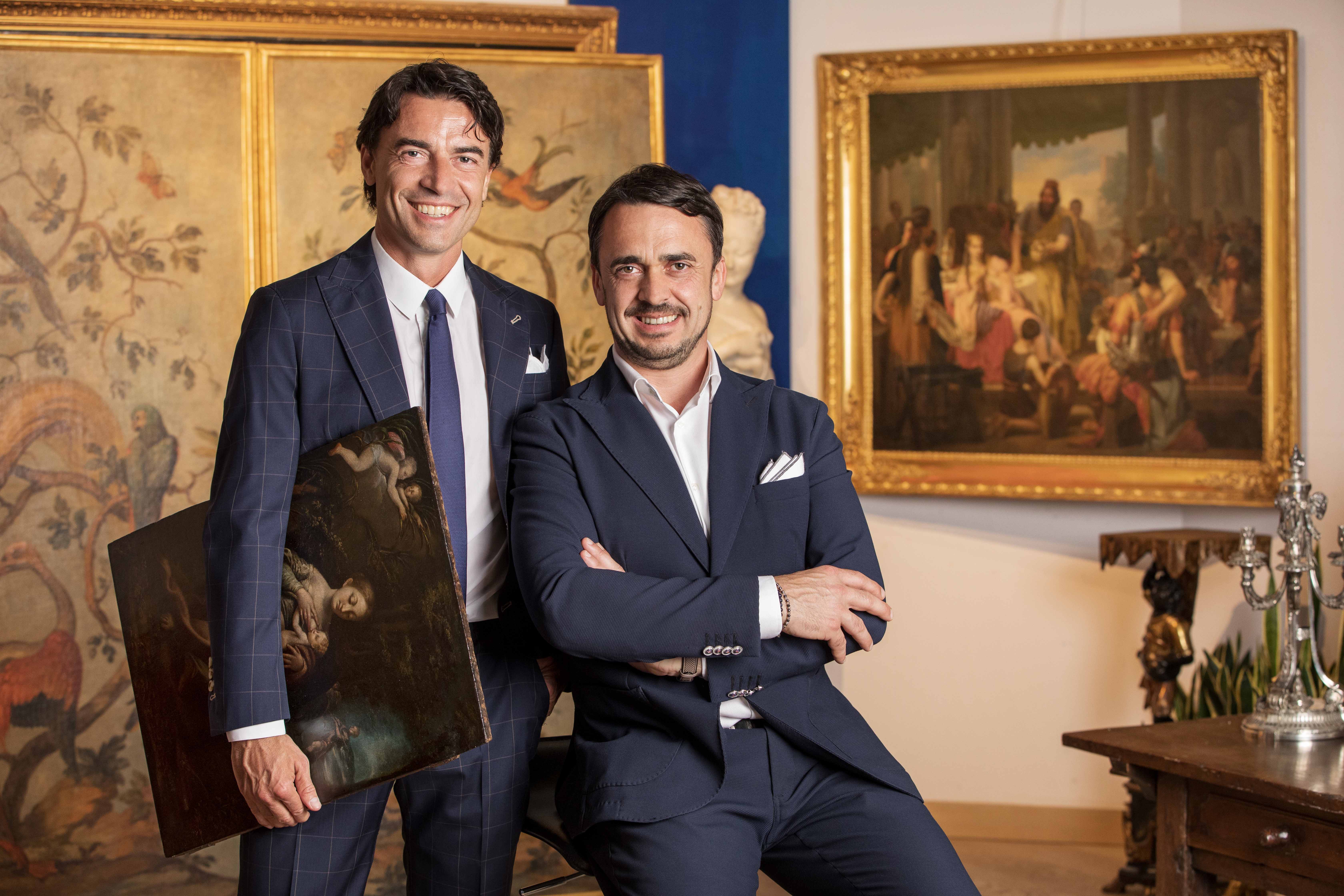
About the Seller
5.0
Vetted Professional Seller
Every seller passes strict standards for authenticity and reliability
Established in 2000
1stDibs seller since 2021
30 sales on 1stDibs
- ShippingRetrieving quote...Shipping from: Milan, Italy
- Return Policy
Authenticity Guarantee
In the unlikely event there’s an issue with an item’s authenticity, contact us within 1 year for a full refund. DetailsMoney-Back Guarantee
If your item is not as described, is damaged in transit, or does not arrive, contact us within 7 days for a full refund. Details24-Hour Cancellation
You have a 24-hour grace period in which to reconsider your purchase, with no questions asked.Vetted Professional Sellers
Our world-class sellers must adhere to strict standards for service and quality, maintaining the integrity of our listings.Price-Match Guarantee
If you find that a seller listed the same item for a lower price elsewhere, we’ll match it.Trusted Global Delivery
Our best-in-class carrier network provides specialized shipping options worldwide, including custom delivery.More From This Seller
View AllNeapolitan school, 17th century, battle scenes
Located in Milan, IT
Neapolitan School of the 17th Century
Battle scenes between Christians and Turks
(2) Oil on canvas, 52 x 71 cm
Framed, 61 x 80 cm
One genre that met with wide acclaim in seventeenth-century Neapolitan painting and flattering success among collectors was that of battle. The Parthenopean nobility loved to adorn the walls of their salons with battles depicting single acts of heroism or complex combats that exalted patriotism and warlike prowess, virtues with which members of the wealthy aristocracy of the time liked to identify.
The Church, in the Neapolitan area, was also at the forefront of commissions, commissioning artists to depict the spectacular triumphs of Christendom over the infidels, such as the memorable naval battle of Lepanto in 1571, which marked a historical turning point with the great victory over the Turks, becoming a repeated iconographic motif imbued with devotional value, replicated several times through the interest of the Dominican order, which was very devoted to Our Lady of the Rosary, who benevolently followed earthly events from above in heaven. Other themes dear to the Church within the genre were drawn from the Old and New Testaments, such as Constantine's Victory at the Milvian Bridge or St. James at the Battle of Clodius.
Among the leading Neapolitan artists of that period, several specialized in battle scenes: these include Francesco Graziani, known as Ciccio Napoletano, a battler active between Naples and Rome in the second half of the 17th century; Andrea De Lione, who lived in Naples from 1610 to 1685, a versatile narrator of battles without heroes, of horsemen assaulting or retreating, and of profane scenes immersed in a wild and primordial, yet already classicized, nature; and Carlo Coppola. The latter was active for more than twenty years, from 1640 to 1665, and his catalog, which is interesting because it bears witness to a particular historical moment and the tastes of private patrons, has yet to be defined, although many of his works are initialed. It is precisely to Coppola's corpus that these two paintings could come close: with the production of the Neapolitan battler the two paintings seem to share the smoky colors, the accentuated chiaroscuro and the marked dynamism of the scenes. Moreover, it is necessary to mention how that of the battle between Christians and Turks was an absolutely central theme in Coppola's pictorial production. Also close to the manner of the two paintings analyzed here is the production of one of Coppola's most celebrated pupils, Giovanni Luigi Rocco...
Category
Antique 17th Century Italian Other Paintings
Materials
Canvas
$9,266 / set
Emilian school, 17th century, St. Francis
Located in Milan, IT
Scuola emiliana, XVII secolo
St. Francis
Oil on canvas, 73 x 59 cm
Framed, 83 x 69 cm
Patron saint of Italy, St. Francis (Giovanni di Pietro di Bernardone; Assisi, 1181/1182 - 1...
Category
Antique 18th Century and Earlier Italian Other Paintings
Materials
Canvas
Flemish artist active in Italy, 17th century, Penitent Magdalene
Located in Milan, IT
Flemish artist active in Italy, 17th century
Penitent magdalene
Oil on panel, 37.5 x 30.5 cm
Framed, cm 53 x 45
Provenance: Luigi Bellini Gallery, Florence; Private Collection, ...
Category
Antique 18th Century and Earlier Dutch Other Paintings
Materials
Canvas
Flemish artist active in Italy, 17th century, Penitent Magdalene
Located in Milan, IT
Flemish artist active in Italy, 17th century
Penitent magdalene
Oil on panel, 37.5 x 30.5 cm
Framed, cm 53 x 45
Provenance: Luigi Bellini Gallery, Florence; Private Collection, ...
Category
Antique 18th Century and Earlier Dutch Other Paintings
Materials
Canvas
Neapolitan school of the 17th-18th centuries, Bacchus and Ariadne abandoned by Theseus
Located in Milan, IT
Neapolitan school of the 17th-18th centuries
Bacchus and Ariadne abandoned by Theseus
Oil on canvas, 74 x 100 cm
Framed, 89 x 111 cm
The painting under consideration, attributab...
Category
Antique 18th Century and Earlier Italian Other Paintings
Materials
Canvas
Mid-17th century, Rubensian School, Holy Family with St. John
Located in Milan, IT
Mid-17th century, Rubensian School
Holy Family with St. John and Elizabeth
Oil on copper, 36.3 x 29.5 cm
Framed, 47 x 38 cm
The glassy texture, glacial in the hardness of the sur...
Category
Antique 17th Century Belgian Other Paintings
Materials
Copper
You May Also Like
Flemish School 17th Century
Located in Madrid, ES
Flemish school 17th century
"Our Lady with the Child Jesus, St. John, St. Elizabeth and Zacarias".
Oil on canvas Relined.
Dimensions: 74 x 84 cm
good conditions.
Category
Antique 17th Century Dutch Baroque Paintings
Materials
Paint
Italian School "Apostle" 17th Century
Located in Madrid, ES
Italian School
"Apostle" 17th Century
Oil on oak wood
Carved and gilded wooden frame.
Small defects.
Dim.: 44 x 58 cm
good conditions
Category
Antique 17th Century Italian Baroque Paintings
Materials
Paint
Italian School "Apostle" 17th Century
Located in Madrid, ES
Italian School
"Apostle" 17th Century
Oil on oak wood
Carved and gilded wooden frame.
Small defects.
Dim.: 44 x 58 cm
good conditions
Category
Antique 17th Century Italian Baroque Paintings
Materials
Paint
ITALIAN SCHOOL 17TH CENTURY "Saint"
Located in Madrid, ES
ITALIAN SCHOOL 17TH CENTURY "Saint"
Oil on canvas Numbered 60 in the lower right corner.
Some interventions.
Measurements: 47 x 37 cm
good condition
Category
Antique 17th Century Italian Baroque Paintings
Materials
Paint
Flemish School "Landscape" 17th Century
By Flemish
Located in Madrid, ES
OIL ON CANVAS OF 17th Century
LANDSCAPE OF WINTER OF THE NETHERLANDS.
Good CONDITION.
MEASURES WITH FRAME: 114X90 CM WITHOUT FRAME: 96X74 CM
Category
Antique 17th Century Dutch Baroque Paintings
Materials
Paint
Master of the Neapolitan School of the 17th Century. Vision of Saint Francis
Located in Madrid, ES
Master of the Neapolitan School of the 17th Century. Vision of Saint Francis
Description
The saint of the order, identified by his wounds, is depicted in a sleeping posture. Accord...
Category
Antique 17th Century Italian Baroque Paintings
Materials
Paint
